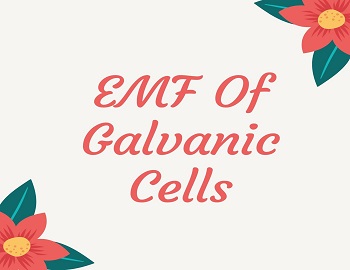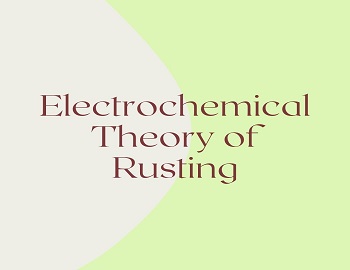EMF Of Galvanic Cell:
In a Galvanic Cell, the electrons in the outer circuit flow from the electrode of higher oxidation potential (Anode) to the electrode of lower oxidation potential (Cathode). The existence of such a potential difference called Electromotive Force (EMF) causes the conventional current to flow from cathode to anode and is defined as “the difference between the electrode potentials of two half cells of a Galvanic Cell”. It is also known as Cell Potential (Ecell).
| Therefore, Ecell = Oxidation Potential of Anode – Oxidation Potential of Cathode |
As per the recommendations of IUPAC, the Ecell is expressed in terms of reduction potential of the two electrodes. The oxidation and reduction potential of an electrode are equal in magnitude but opposite in sign. This is due to the fact that an atom with highest value of oxidation potential will yield an ion with least reduction potential and vice versa.
The above equation can be written as-
| Ecell = – (- Oxidation potential of Anode) + (- Oxidation potential of Cathode) Ecell = – Reduction potential of Anode + Reduction potential of Cathode Ecell = Reduction potential of Cathode – Reduction potential of Anode i.e. Ecell = Ecathode (red.) – Eanode (red.) |
Thus, the EMF of a cell may also be defined as “the difference in the reduction potential values of two electrodes placed in contact with their respective electrolytes in the two half cells of Galvanic cell. Since, in a Galvanic Cell, the Anodic half cell (oxidation half cell) is placed on the left-hand side and Cathodic half cell (reduction half cell) on the right-hand side, the above relation may be written as-
| Ecell = Eright (red.) – Eleft (red.) = ERHC – ELHC |









Comments (No)